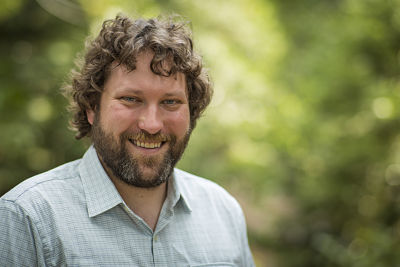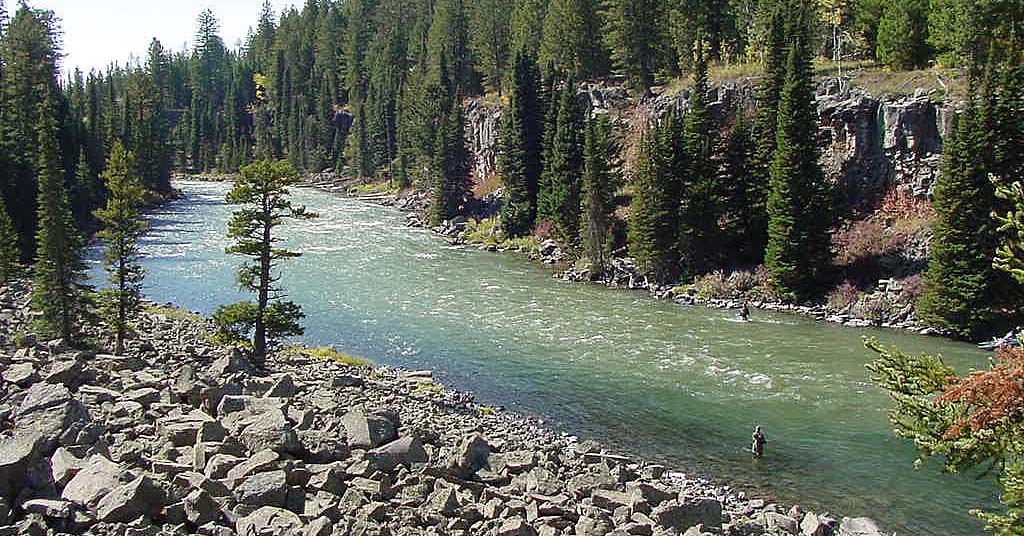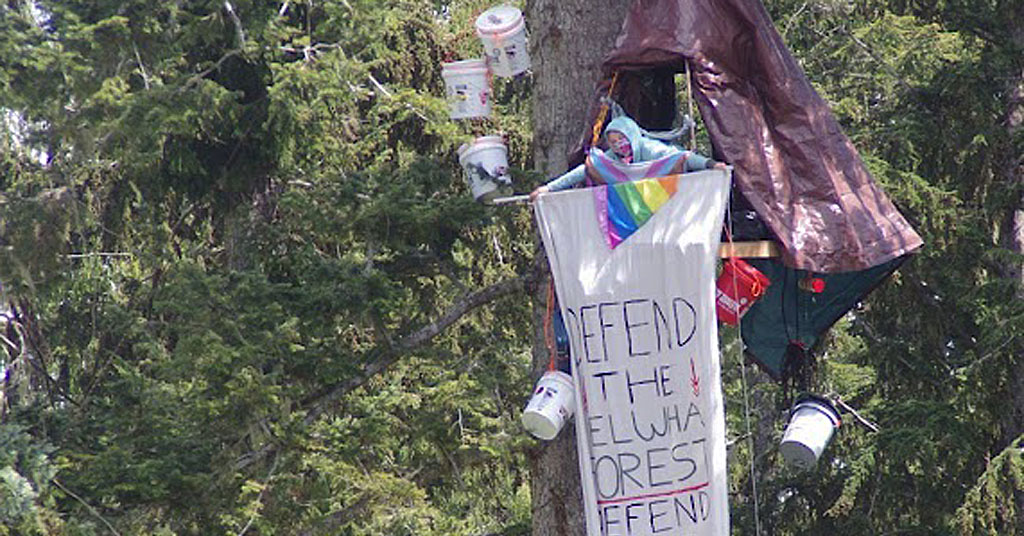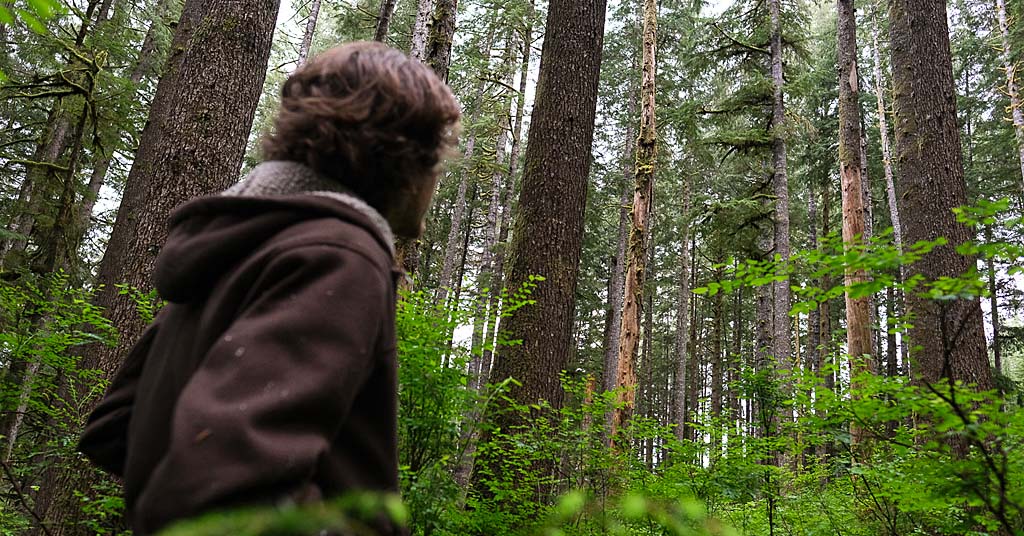The decision announced last week would allow logging some of the largest trees in more than 9 million acres of national forests in eastern Oregon

Blues fest: The tape reading means it’s old. The blue paint means it’s ready to be cut down. Photo by Rob Klavins/Oregon Wild
By Jordan Rane. August 20, 2020. The U.S. Forest Service is a business. That fact was driven home in an August 10 bottom line memo U.S. Department of Agriculture (which oversees the Forest Service) Secretary Sonny Perdue sent to regional foresters around the country pressuring them to increase efforts to meet annual timber harvest goals.
The agency is behind on its yearly timber sales projections. Perdue is clearly anxious to get chain saws roaring. Perhaps to drive the point home the USFS recently posted job openings for all nine regional forester jobs (which pay between $175,500 and $186,500 a year) on USAJobs.gov.
But the USFS is also a government agency responsible for implementing good management policy that protects 154 national forests.
The tension between those two goals is already dominating reaction to one of the most consequential forest management decisions to hit the Columbia River Basin since President Donald Trump took office.
Last week, the U.S. Forest Service announced its intention to do away with a 25-year-old standard preventing logging companies from cutting down the largest trees in eastern Oregon. This potentially means logging old-growth trees.

Director’s cut: Agriculture Secretary Sonny Perdue wants to hit logging quotas. Photo by Lance Cheung
Since 1995, a USFS public land management regulation known as the Eastside Screens has prohibited cutting down any live tree with a trunk exceeding a 21-inch diameter at breast height (DBH), which means about four and a half feet off the ground. The regulation affects public forests in Oregon east of the Cascade Range.
The “21-inch rule”—the most salient piece of the Eastside Screens, i.e. “screening questions” land managers must comply with before timber harvesting—was designed to protect wildlife habitat and water supplies, and maintain a healthy mix of young and old trees.
On August 11, the Forest Service announced a rollback of the rule that will affect more than 9 million acres in six national forests across eastern Oregon—the Deschutes, Fremont-Winema, Malheur, Ochoco, Umatilla and Wallowa-Whitman National Forests. A portion of the Umatilla National Forest in Washington might also be affected.
“The harvest limitation under the wildlife standard is being reassessed in light of current forest conditions and the latest scientific understanding of forest management in areas that have frequent disturbances, like wildfires,” stated the USFS last week in explaining its decision to retire the 21-inch rule.
The Forest Service’s draft environmental assessment was published in the Federal Register on August 11, beginning a 30-day public comment period that will close on September 10 at 11:59 p.m. PDT. To submit a comment go to the Forest Service’s Eastside Screens Plan Amendment and click on the “Submit a comment” link.
Opposition questions timing
If a once-protected tree is felled in eastern Oregon during a pandemic in a highly polarized country on the eve of a colossal presidential election, will it even make a sound?
Yes.
At least according to a raft of angry regional and national environmental groups, including the Sierra Club, Natural Resources Defense Council and Earthjustice. A growing coalition is voicing opposition to the Eastside Screens amendment—a move being branded as a thinly disguised, eleventh-hour USFS giveaway to Trump pals in the timber industry.
“If the agency starts cutting down old-growth forest, it’s not going to end well,” says Andy Kerr, veteran conservationist and founder of Ashland, Oregon-based, environmental consulting firm The Larch Company. “Right now the Forest Service is under a mandate to not log big, old trees. … If the agency is on a mission to lift limits in a manner that is not in the public interest, it’s going to activate people even more and will likely lead to litigation.”

Retirement plan: With elimination of the 21-inch rule, old-growth Ponderosa pine in the Deschutes National Forest could be ripe for logging. Photo by Jurgen Hess
Among a litany of issues, one of Kerr’s main contentions has to do with a USFS policy transition from enforceable standards to voluntary discretion when it comes to cutting old-growth trees or younger big ones.
“New science presented in the Forest Service’s latest study suggests that the 21-inch rule, which is an enforceable standard, is not perfect. But the question is what do you replace it with?” asks Kerr. “What they’re replacing it with is not a better enforceable standard but a voluntary guideline—essentially a recommendation. That’s like taking the speed limit off of highways and saying please drive sensibly. We hope everyone does the right thing. But they won’t.
“And this is in the context of the Trump administration, which has issued an executive order to increase the cut. So if you’re saying this is really about improving nature, let’s take a close, hard look at the specific timing of all this and not kid ourselves.”
New thinking on forest management
The Trump administration’s eagerness to expand logging on public lands has been clear from early in his administration.
“The administration’s ‘vision’ includes increased forest thinning, more timber production, more grazing of livestock and shorter environmental reviews on land the Forest Service oversees,” according to E&E News, a respected journal for energy and environment professionals.
Coming as it does with the presidential election approaching, conservationists like Kerr have questioned the timing of this latest decision.
[perfectpullquote align=”full” bordertop=”false” cite=”” link=”” color=”” class=”” size=””]”This was the most significant environmental story in the state no one was talking about. That’s changed.” —Rob Klavins, Oregon Wild[/perfectpullquote]
The Forest Service views the amendment differently.
Invoking a quarter century of evolving ecological science since the Eastside Screen policies were passed during the Clinton administration, the agency’s latest studies recommend what it calls an “adaptive management” style in the discretionary monitoring of old trees and larger young ones.
“Old trees in eastern Oregon currently have a relatively high mortality rate,” Forest Service Pacific Northwest Region project coordinator Emily Platt told Columbia Insight. “Changing the 21-inch-rule standard to a guideline would allow managers to more effectively cultivate those old trees across the landscape.
“It would also allow managers to remove some young but large—over 21-inch—trees that now compete for resources like water with old trees and create ladder fuels that allow fires to more easily spread into the canopy of forests.”
In other words, while big trees may provide an emotional rallying point for conservationists, the USFS now says that over the years the 21-inch rule has actually been disadvantageous to some of those older trees the rule was meant to protect.
“Although the current 21-inch standard protects large trees from logging, it does not protect large trees from mortality from fire, insects and drought,” said Platt.
It may sound counterintuitive, the agency is saying, but to save large trees you have to cut down large trees.
It’s not an easy message to get across.
Eastern Oregon goes national
The Forest Service says that when they were introduced 25 years ago, the Eastside Screens were intended only as an interim measure. They were never meant to stand as a permanent policy.
This, too, is a point conservationists are calling foul on.
“The whole ‘interim’ or ‘temporary’ argument by the Forest Service is as misleading and disingenuous as those assurances of sound logging discretion when it comes to big trees,” says Rob Klavins, Northeast Oregon field coordinator for Oregon Wild. “Those rules were meant to be a placeholder until the agency put together more comprehensive environmental protections to address things like grazing, riparian logging, road building—not just old-growth and big tree protection.
“They skip the second part, which is that it was interim until the Forest Service provided a more comprehensive set of protections for landscapes and forests for eastern Oregon. The Forest Service never did that, and a lot of people can reasonably argue that this is essentially a broken promise.”

Shout out: Oregon Wild’s Rob Klavins. Photo courtesy of Oregon Wild
Klavins believes discarding the 21-inch rule will “undo decades of good work” in the fight to protect old-growth trees and extend conservation values.
Last month, he was busily getting the word out on the Eastside Screens amendment, calling it “the most significant environmental story in the state that no one was talking about.”
“Thankfully that’s very quickly changed,” he says now. “It’s not surprising that conservation groups are going to dust up with the Trump administration over all of these environmental protections being undermined across the board—wetlands in the Southeast, mining in the Upper Midwest and so on.
“But it’s not every day that you get some of the nation’s biggest environmental organizations weighing in on an issue that just affects eastern Oregon. Suddenly there’s broad nationwide consensus that this is extremely significant and consequential.”
Is the timing of these policy changes pertinent from a Forest Service perspective?
“We think this is the right decision to make,” said Platt. “Regardless of how it relates to political calendars.”
Jordan Rane is an award-winning travel writer whose work has appeared in CNN.com, Outside, Men’s Journal and the Los Angeles Times.










